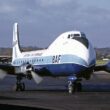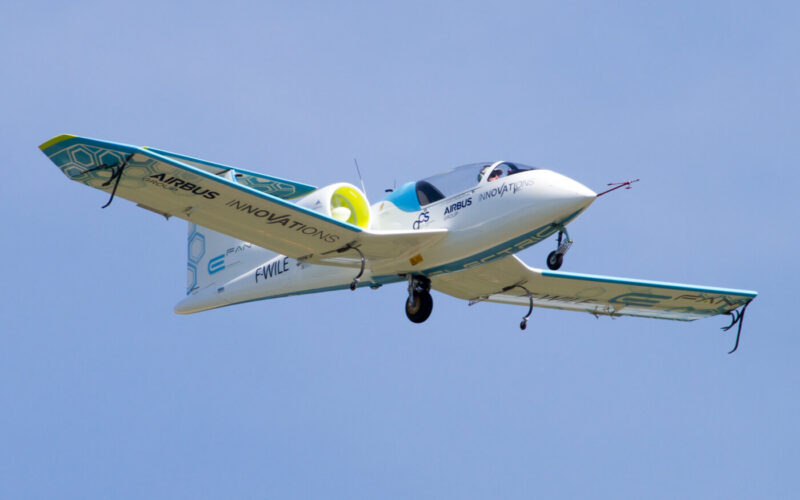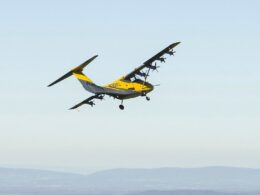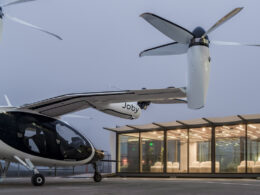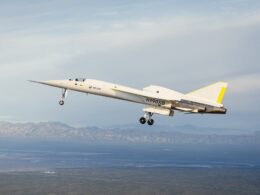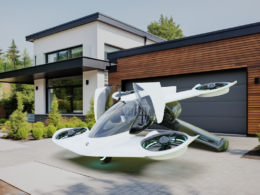The aviation industry is under unprecedented pressure regarding its impact on the climate. Aircraft manufacturers and airlines redouble their engagement to limit their carbon footprint. Motivated by the example of the car industry, a number of them see the electric plane as a way forward. However, that will not likely happen tomorrow.
While manufacturers are improving on the fuel efficiency of their aircraft, the technological improvement cannot keep up with the densification of traffic. Thus, electric aircraft appear as a solution for a sustainable future. And they have more than one advantage.
In addition to the reduction of carbon emissions, they also offer a reduction in noise production. With air traffic becoming increasingly dense in all regions of the world, it is a welcome quality for the cohabitation between airports and local communities.
Another incentive is the reduction of operational costs. Espen Høiby, CEO of OSM Aviation, told AeroTime that an electric trainer costs 78% less to operate than a conventional trainer. In April 2019, the Norwegian company specialized in the employment, training, and administration of cabin crew and pilots hit the news with the announcement of their transition to a fully electric fleet for training, using 60 eFlyer 2 developed by Bye Aerospace.
What exactly is drawing back the manufacturers?
The world of inventors already produced a few successful examples. In 1884, Charles Renard and Arthur Constantin Krebs piloted the first fully controllable electric vehicle, an air balloon, over eight kilometers.
In 1973, Fred Militky and Heino Britéeschka converted a Britéeschka HB-3 powered glider into an electric plane renamed Militky MB-E1. After reaching an altitude of 300 meters for a flight of fourteen minutes, it became the first manned electric aircraft.
In 2007, the BL1E Electra was the first conventional light aircraft to be powered by an electric motor. Finally, in 2015, the Airbus E-Fan crossed the Channel from Lydd, in the United Kingdom to Calais, France.
But those groundbreaking records have yet to turn into a sustainable solution. While the Pipistrel Alpha Electro is already certified in the U.S., its capacity of two people will not be enough to revolutionize the industry of air transport.
The main challenge remains technological. Engineers have to find the right balance between the weight of batteries and the amount of power needed for a flight. Current weight efficiency meant that one-third of the two-seat Airbus E-fan was dedicated to batteries. With the speed at which energy density is improving, crossing the distance between a trainer plane and an airliner should take decades.
Another problem that arises from relying on a battery is safety. A damaged battery can combust, as shown by the multiple power bank incidents that have led the ICAO council to ban all spare lithium-ion batteries from cargo holds. And if parking your Tesla on the side of the highway to watch it turn into flames and smoke is one thing, landing a plane on fire is another kind of challenge.
Closing the technological gap
The first frontier should be regional aviation. In July 2018, Norway set the ambitious goal to see all short-haul airliners be fully electric by 2040. Manufacturers are scrambling to deliver on such promises.
Expecting a fully electric aircraft to fly commercial routes in the near future might be a bit ambitious. However, hybrid propulsion systems are a more tangible compromise. After canceling the fully-electric E-fan program in 2017, Airbus, Siemens, and Rolls Royce set out to develop the engine of a hybrid plane, the E-Fan X. One of the four engines of a BAE Systems Avro RJ100 regional jet will be replaced by a 2MW hybrid-electric propulsion system. If Siemens abandoned the project in June 2019, the aircraft is still scheduled to take to the skies around 2021.
Boeing is also betting on hybrid propulsion. Through the startup Zunum Aero, it intends to transport 12 passengers on regional flights while producing 80% lower CO2 emission. The entry into service is expected for 2022, with a potential bigger (50 seats) version for 2030.
One manufacturer shows even more ambition. The U.S. startup company Wright Electric and its partner, the airline easyJet, plan to fly an entirely electric regional aircraft capable of carrying no less than 186 passengers by 2030.
A smaller, yet ambitious operator, the Canadian company Harbour Air, envisions to convert its fleet of DHC-2 Beaver seaplanes in the next two years with the help of the Australian manufacturer magniX. Their first “eBeaver” testbed achieved its maiden flight on December 10, 2019.
In total, the consulting firm Roland Berger estimates that over 200 different projects revolving around electric aviation are currently being developed. But given the slow evolution of battery technology, a fully electric airliner the size of an Airbus A320 or a Boeing 737 should not fly before the end of this century.
In the meantime, airlines rely on offsetting their carbon emissions by investing in carbon-negative projects. In its 2019 financial results, easyJet announced it would invest around £25 million ($32 million) in initiatives such as tree planting, claiming to become the first major airline in the world to operate net-zero carbon flights.

